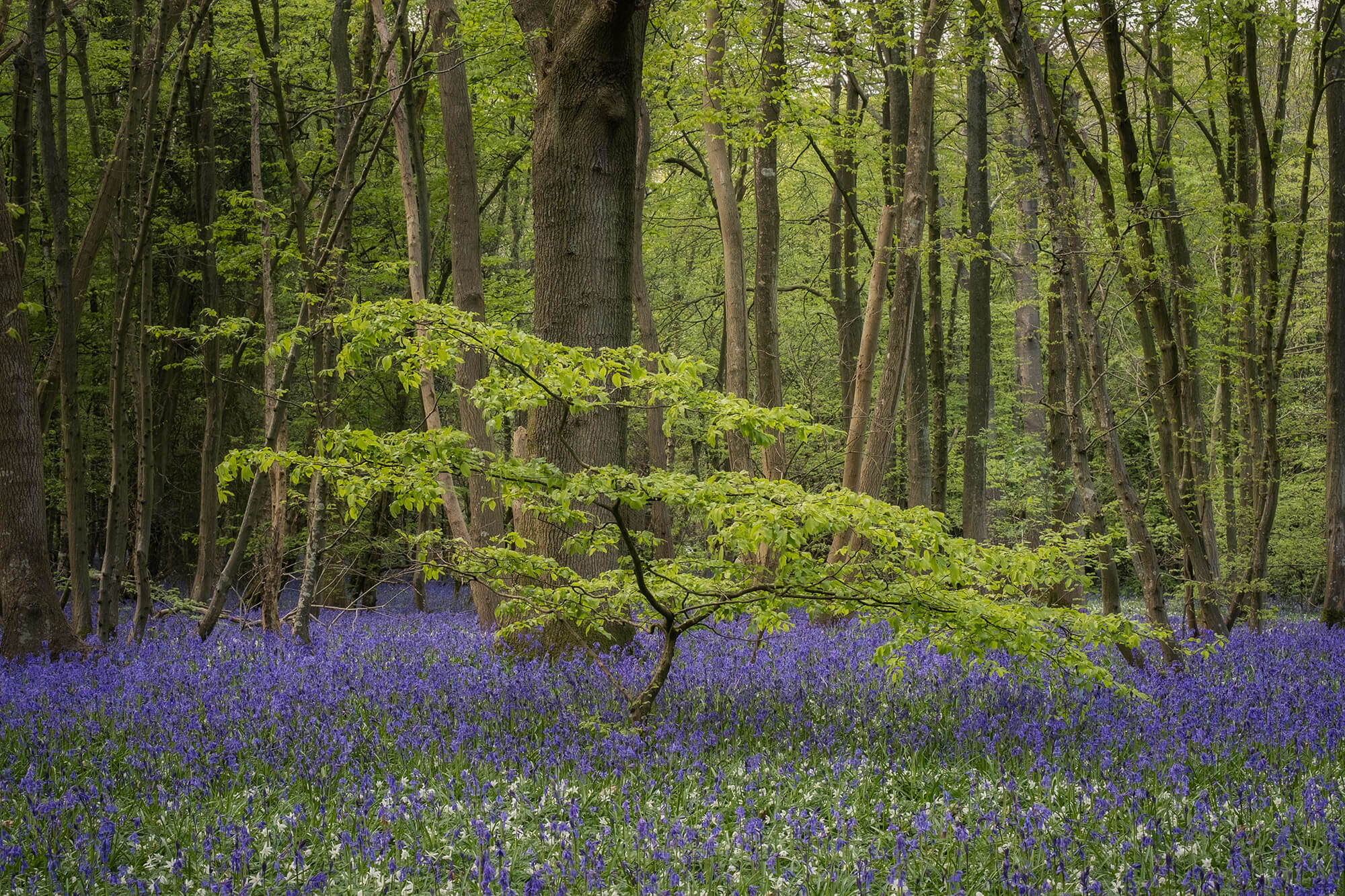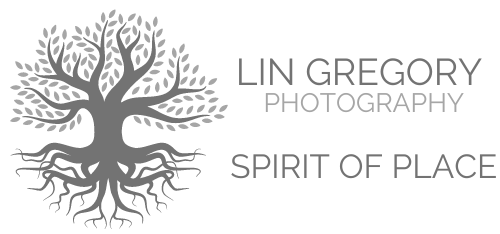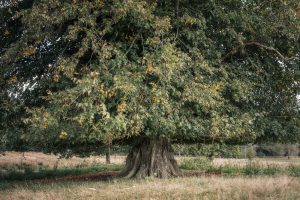
Beltane blessings – now is the time of the dawn chorus, cuckoos and bluebells! This colourful festival on the ancient Celtic calendar of the Wheel of the Year, marks the transition of spring into summer when all of life is bursting. The sap is rising, there is fresh green growth of new leaves and shoots, birds and animals are having their young, flowers are everywhere and the sound of birdsong fills the air. It’s a celebration of the earth’s fertility, passion, vitality and creative energy marked on Mayday with the wedding of the Green Man (Jack in the Green) and the Goddess of Spring.
Today though, I decided to avoid the local Jack in the Green revelries and headed for the peace and quiet of a bluebell wood to celebrate the greening in quieter fashion. I say peace and quiet yet the wood was alive with the sound of birdsong – a cacophony of thrush, robin, blackbird, wren, black cap all performing to the background percussion of a woodpecker drumming. Wood anemones and celandines were fading but I could smell the heady perfume before seeing the violet-blue haze of the bluebell’s nodding bell-shaped flowers, synonymous with the season of Beltane. It is believed that they first appeared not long after the Ice Age and that a carpet of bluebells signifies that a forest is a surviving area of ancient woodland.
With some wonderful alternative names such as lady’s nightcap, crow’s toes, witches thimbles and cuckoo’s boots, it isn’t surprising that at this magical time of year there are many tales involving sprites surrounding this enchanted flower. Bluebells were said to ring when fairies were summoning their folk to a gathering, however if a human heard the sound, it was believed that it would be their death knell! Not surprisingly, it was considered unlucky to trample on a bed of bluebells, because you would anger the mythical folk resting there!

Another sound that heralds the building of the earths energies towards Beltane is the call of the cuckoo. Walking in the valley last week I heard a cuckoo for the first time this year. I always listen out in anticipation for this harbinger of summer, as for the past three years I’ve recorded the first call on the 22nd or 23rd April and this year the birds didn’t disappoint…no wonder they have a clock named after them!
There’s one particular tree, an alder I think, where every year at the end of each day the cuckoo sits, his song ringing out around the valley, the final calls echoing, slower and longer as he winds down for the day. Sadly, since the first call announcing the cuckoo’s arrival this year, I’ve not yet heard an evening call. Hopefully this means they’ve found a mate and have been too busy searching for some unsuspecting warblers’ nest to lay eggs, turfing out the eggs of the parent bird and fooling them into raising the cuckoo offspring as their own.
The cuckoo is embedded in our British spring folklore tradition, with many nature associations. In particular, for Beltane, the Cuckoo Pint (Arum maculatum) – a woodland plant with arrow shaped leaves and a central flower spike surrounded by a modified leaf also known as ‘lords and ladies’, ‘stallions and mares’, ‘willy-lily’ and ‘jack in the pulpit’ and many more colourful alternative names! It is said by medieval herbalists to have aphrodisiac qualities and is associated with Celtic Mayday traditions that encourage lovers to go ‘A-Maying’ in the fields and woods and not return until the morning to celebrate the fertility of the land at this time of year.

Which brings me full circle back to my Beltane walk and these bluebell images captured at the height of their season. Did you take a Beltane walk over the long weekend? What signs of spring do you look and listen out for at this time of year in your part of the world? It would be lovely to hear in the comments below.




Exquisite blues, Lin. They don’t seem to grow on my land. I searched to get a close-up of the flower and didn’t recognize it. They’re called Virginia Bluebells in the Eastern US, but I’ve never seen any half as beautiful or with the deeply saturated colors of your bluebells. If I remember, I’ll order seeds for next spring and see if I can establish a small area in a brush pile area that will be burned this winter. I have thousands of Purple Lupines in sunny fields, but I’d love to see Bluebells at the forest’s edge.
I also love the Beltane lore in your post and learning more about the cuckoo. I’m deeply attached to the Green Man and you may know the poem Deborah wrote inspired by love for my Green Man. Our women’s mythology always created a Maypole when we met in person. Zoom classes ended that, but if we meet in person again, we’ll have a Beltane ritual and a Maypole. I found a Black-capped Chickadee nest on my Beltane walk. I tapped on the box and the Mama flew out, so I had a chance to make a quick inspection of six tan and dark spotted eggs nestled in moss and animal fur before closing her door so she could return to warming her eggs. With love and gratitude, Elaine
Thank you, Elaine, bluebells truly are exquisite flowers and the scent when they are in full bloom is intoxicating. In the UK we are lucky to have nearly 50% of the worlds bluebell population and are encouraged to grow the native English bluebell rather than the invasive Spanish bluebell which has very little scent. I’ve had a look at Virginia bluebells and I’m not sure if they are the same type of plant but I’m sure that in your climate you could grow English bluebells (Hyacinthoides non-scripta) in the woodland area if you can get some seed. I scattered some at the foot of our garden a few years ago and they have spread all around a hedge, gifting us a small but lovely patch of blue haze each spring.
Yes I love Deborah’s poem, it’s a beautiful tribute to you and Vic and perfect for this time of year. A mythology group – how wonderful…and a maypole celebration is a great way to bring together like minded souls to celebrate. Doh Chickadees – I love that name! What a lovely highlight to your Beltane walk, the mama must trust you very much to let you take a look. They look so similar to Coal Tits although I think Coal Tit eggs are white with brown speckles…perhaps they are distant relations! I look forward to hearing news of her brood. With love and light, Lin
These are beautiful images and descriptions, thank you for sharing them Lin. I feel as though I could step into each one, most especially the bird box one. I would love to have that image on my wall.
On Saturday I took a walk around my local park and enjoyed the cherry blossoms, fresh beech leaves and call of the chiff chaffs and great tits. I haven’t been anywhere to hear a cuckoo yet.
Thank you for your generous words, Sarah – Spring Calm is a favourite of mine too, I’m hoping to get a print sales page on the site once I’ve updated my galleries so keep an eye out.
I love the sight of fresh leaves on the trees, especially the young beech saplings where their colour is even more intense, especially in the season of Maeinschein, when the May light brings out the vivid colours even more. Your Beltane walk sounds glorious, fragrant cherry blossom and the background call of great tits – two signs of a quintessential English spring
It is indeed the time to get out and contemplate the wonders of nature. Thank you, dear Lin, for this beautiful description of their music in the scene, step by step.
My pleasure Aladin – hopefully you’ll be seeing bluebells in all of that wonderful woodland near you…it is such an uplifting time of year now especially after all the rain and cold we’ve had!